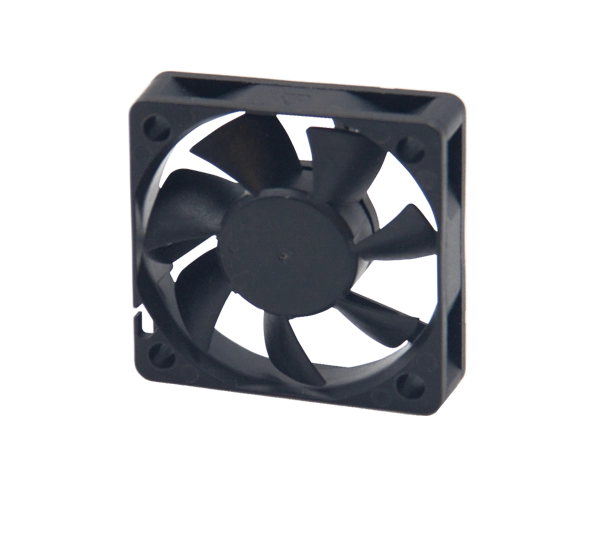In industrial applications, Variable Frequency Drives (VFDs) are indispensable for controlling the speed, torque, and efficiency of electric motors. These systems, however, generate considerable heat during operation due to the high-energy processes involved in adjusting motor speed and torque. Without adequate cooling, VFDs can suffer from overheating, leading to potential failure and reduced operational lifespan. This is where industrial DC fans come into play, offering a reliable and efficient solution to maintain optimal temperature control. This article Shengjiu explores the significant role of industrial DC fans in the VFD industry, analyzing how these fans contribute to performance enhancement, energy efficiency, and extended service life for VFD systems.

The Necessity of Cooling in Variable Frequency Drives
Variable Frequency Drives are essential for providing precise control of electric motors, especially in applications where motor speed regulation is critical. These drives adjust the speed of motors by varying the frequency and voltage of the supplied power. While this functionality results in energy savings and process optimization, it also generates substantial heat due to the high-frequency switching of semiconductors within the drive.
The internal components of a VFD, such as the power transistors, diodes, and capacitors, are sensitive to temperature fluctuations. Prolonged exposure to high temperatures can lead to premature aging, malfunction, or failure of these components. Therefore, efficient thermal management is a top priority in VFD design. One of the most effective ways to address this issue is through the integration of industrial DC fans that provide targeted cooling, ensuring that the system operates within the required temperature range.
Optimizing VFD Cooling with Industrial DC Fans
Industrial DC fans are engineered to provide consistent, efficient airflow for cooling electronic components in demanding industrial environments. The unique benefits of DC fans make them particularly suitable for VFD applications. Unlike AC fans, which operate on alternating current, industrial DC fans run on direct current. This design allows them to offer greater energy efficiency and control over their speed, which is essential for dynamic cooling needs in VFD systems.
In VFD cooling applications, industrial DC fans are tasked with dissipating heat effectively, preventing overheating and ensuring stable operation. These fans work by circulating cool air through the system, drawing heat away from sensitive components such as the power modules and capacitors. Given the critical nature of temperature control in VFDs, the role of these fans cannot be overstated.
How Industrial DC Fans Contribute to VFD Efficient Cooling
Industrial DC fans are engineered to provide precise and reliable cooling by facilitating the constant movement of air around the VFD components. Their main job is to expel hot air and replace it with cooler air, preventing the system from overheating. When integrated into VFD cooling systems, these fans ensure that the temperature inside the drive remains at optimal levels, enabling continuous operation without the risk of thermal damage.
Efficiency and Performance
The key advantage of industrial DC fans in cooling VFDs is their energy efficiency. DC fans use direct current, which is more energy-efficient than the alternating current used by traditional AC fans. Furthermore, industrial DC fans can vary their speed according to the temperature requirements of the VFD. This means that when the VFD is operating at a lower load and generating less heat, the DC fan reduces its speed, consuming less energy. When the system is under heavy load and generating more heat, the fan speeds up to provide the required cooling.
This variable-speed capability allows industrial DC fans to operate efficiently, ensuring that they provide the necessary cooling without wasting energy. As a result, VFD systems benefit from better energy performance while also reducing operational costs.
Reduced Noise and Vibration
Noise is another key concern in industrial environments, particularly in applications where equipment operates continuously. While traditional fans are known to produce constant noise and vibration, industrial DC fans are quieter in operation due to their ability to adjust speed based on demand. When less cooling is required, the fan runs slower, producing less noise. Additionally, industrial DC fans are often equipped with features such as brushless motors and vibration-reducing components, which help in minimizing operational noise and vibration. This is an important benefit in settings where noise levels need to be controlled to maintain a safe and comfortable work environment.
Precision Control of Airflow
The ability to adjust fan speed based on real-time cooling requirements makes industrial DC fans highly precise. For VFDs, where consistent and reliable cooling is critical, the ability to maintain a stable internal temperature is essential. By maintaining steady airflow, industrial DC fans prevent hotspots and ensure even heat distribution throughout the system. This precision helps protect sensitive components from thermal stress, improving the reliability and stability of the VFD.
The application of industrial DC fans in the VFD industry offers significant advantages in terms of energy efficiency, noise reduction, precise cooling, and extended component life. As the demand for variable frequency drives grows across various industries, the need for effective and reliable cooling solutions becomes more critical. Industrial DC fans provide an optimal solution by delivering consistent, adjustable airflow that maintains the VFD's performance and protects it from the detrimental effects of overheating.
For manufacturers and facility managers, integrating industrial DC fans into VFD systems ensures not only better operational efficiency but also a longer, more reliable lifespan for critical components. In an industrial world where downtime and costly repairs can have serious consequences, industrial DC fans represent a smart investment for maintaining the health of VFD systems and ensuring consistent, long-term performance.






